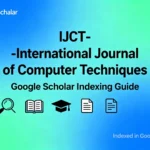
Computer Science Journal Submission Guide: Step-by-Step Process
Computer Science Journal Submission: Your Complete Roadmap to Publication Success
Master every step from manuscript preparation to final acceptance with expert guidance on formatting, submission, and peer review navigation
📝 Start Your Submission NowWhy Proper Computer Science Journal Submission Matters
Understanding the computer science journal submission process determines whether your breakthrough research reaches the academic community or languishes in rejection cycles. Even exceptional contributions face desk rejection when authors ignore formatting requirements, submit to misaligned venues, or provide incomplete supplementary materials.
Manuscript preparation computer science standards have evolved beyond traditional paper submissions. Modern journals expect code repositories, dataset links, experiment tracking logs, and reproducibility packages alongside manuscript PDFs. Reviewers increasingly reject papers lacking implementation details—regardless of theoretical novelty—because computational research demands empirical validation through independent reproduction.
This comprehensive guide covers the complete journal submission process for computer science publications: pre-submission journal selection, manuscript formatting adhering to IEEE/ACM/APA standards, navigating online submission portals, responding to reviewer feedback constructively, and accelerating acceptance through strategic revision. For broader context on selecting appropriate computer science journals, consult our complete journal selection guide.
Streamlined Submission Process Awaits
IJCT’s user-friendly portal guides you through every submission step with 24-hour expert review
🚀 Submit Research PaperPre-Submission Preparation: Critical First Steps
Successful computer science paper publication begins before manuscript creation. Strategic journal selection, scope verification, and guideline review prevent wasted months submitting to inappropriate venues.
Choose the Right Journal for Your Research
Submitting to journals misaligned with your research area guarantees desk rejection wasting 3-6 months. Verify alignment through multiple signals:
- Review recent publications: Read last 6 months of articles—do topics match yours? Are methodologies similar (empirical vs theoretical)?
- Check editorial board: Are experts in your subdomain listed? This indicates reviewer availability with appropriate expertise.
- Verify indexing requirements: Does your institution require Scopus/Web of Science indexing? Confirm journal database inclusion.
- Assess publication speed: Need rapid dissemination? Check average review times—IJCT offers 24-hour peer review for time-sensitive research.
Explore our guide comparing AI machine learning journals for specialized venue selection in neural networks and deep learning.
Read Author Guidelines Thoroughly
Every journal has unique requirements. Ignoring guidelines signals carelessness, predisposing reviewers negatively before reading content:
- Format specifications: Required file types (DOCX, LaTeX, PDF), template usage, style files for LaTeX submissions.
- Length restrictions: Word count limits (typical: 4,000-8,000 for research articles), page limits including references/appendices.
- Citation style: IEEE (common in CS), ACM, APA—mixing styles suggests lack of attention to detail.
- Supplementary material policies: Code submission expectations, dataset availability requirements, multimedia file formats.
- Ethical requirements: IRB approval for human subjects, data availability statements, conflict of interest disclosures.
Prepare Supplementary Materials
Modern computer science journal submission requires more than manuscript PDFs. Prepare these materials before portal access:
- Code repository: Clean, documented GitHub repository with README explaining usage, dependencies (requirements.txt), example runs.
- Dataset links: Publicly accessible datasets (Zenodo, institutional repositories) or detailed descriptions if proprietary with access procedures.
- Trained models: Checkpoints enabling result reproduction (Hugging Face Hub, Google Drive with permanent links).
- Extended results: Additional experiments, failure cases, ablation studies too lengthy for main manuscript.
- Author information: ORCID IDs for all authors, institutional email addresses, complete affiliations with department/university/country.

Complete computer science journal submission workflow from manuscript formatting to peer review and publication
Manuscript Preparation: Formatting Your Research Paper
Proper research paper formatting ensures reviewers focus on your contributions rather than presentation deficiencies. Follow these field-specific standards for computer science paper publication.
✓ Essential Manuscript Components
- Title: Concise (10-15 words), descriptive, includes key technical terms (algorithm names, application domains). Avoid abbreviations in title.
- Abstract (200-300 words): Problem statement (1-2 sentences), your approach/method (2-3 sentences), key results (2-3 sentences), significance/implications (1-2 sentences). Write abstract last after completing paper.
- Keywords (5-7 terms): Mix of broad (machine learning, computer vision) and specific (convolutional neural networks, object detection). Check journal indexing keywords for consistency.
- Introduction: Motivation (why problem matters), problem definition (precise formulation), related work overview (brief—detailed section follows), your contributions (numbered list), paper organization roadmap.
- Related Work: Comprehensive literature review, organized thematically (not chronologically), critically evaluate prior approaches highlighting limitations your work addresses, position your contribution clearly.
- Methodology: Detailed approach description enabling reproduction, algorithmic details (pseudocode for novel algorithms), architecture diagrams (for systems/networks), mathematical formulations with notation tables, implementation specifics.
- Experimental Setup: Datasets (names, sizes, splits), baselines (state-of-the-art comparisons), evaluation metrics (precision, recall, F1, accuracy—justify choices), hyperparameters, hardware specifications (GPU models, training times).
- Results: Quantitative findings in tables, ablation studies isolating contribution significance, statistical significance testing (confidence intervals, p-values), qualitative analysis (visualizations, case studies).
- Discussion: Interpret results explaining why approach works, compare against baselines analyzing performance differences, acknowledge limitations honestly, discuss failure cases and edge conditions.
- Conclusion: Summarize contributions concisely, state broader implications for field, suggest concrete future research directions (not vague “explore more”).
- References: Complete citations (all authors, years, venues), consistent formatting (IEEE/ACM/APA throughout), cite recent work (last 3-5 years heavily represented), include seminal papers establishing field foundations.
Critical Formatting Requirements
Figures and tables: Must be high-resolution (300 DPI minimum for raster images, vector formats preferred—PDF, EPS, SVG), properly captioned with descriptive titles, cited in main text before appearance, numbered sequentially (Figure 1, Table 1), legends explaining all symbols/colors. Code listings: Use monospace fonts, syntax highlighting if supported, line numbers for referencing, keep concise (move lengthy code to supplementary materials). Mathematical notation: Define all symbols in notation table, use consistent notation throughout, typeset equations properly (LaTeX preferred), number important equations for reference.
For AI/ML papers requiring specialized formatting (model architectures, training curves, attention visualizations), see our AI journal submission guidelines.
Navigating Online Submission Portals
Most academic paper submission occurs through web-based systems (Editorial Manager, ScholarOne, OJS). Understanding portal workflows prevents technical errors derailing submissions.
Account Creation & Profile Setup
Begin by creating author account with institutional email (not personal Gmail—signals professionalism). Complete profile thoroughly:
- ORCID integration (links all publications automatically)
- Complete institutional affiliation (department, university, city, country)
- Research interests/keywords (helps match reviewers)
- Expertise areas (enables reviewer invitations for other submissions)
Manuscript Upload & Metadata Entry
Portal guides through metadata collection—accuracy matters for indexing and discoverability:
- Article type selection: Research article, short communication, review paper—choose correctly (affects reviewer expectations)
- Title and abstract: Copy exactly from manuscript, check character limits
- Keywords: Use journal’s keyword taxonomy when available, mix MeSH/ACM terms
- Author information: All co-authors with complete affiliations, corresponding author designation, contribution statements (CRediT taxonomy increasingly expected)
- File uploads: Main manuscript (PDF/DOCX), figures (separate high-res files if required), supplementary materials (code, data, extended results), cover letter PDF
Reviewer Suggestions & Exclusions
Journals request 3-5 potential reviewers—strategic suggestions accelerate acceptance:
- Suggest domain experts: Researchers actively publishing in your specific area (check recent conference/journal papers)
- Avoid conflicts: No co-authors, advisors, current collaborators, close colleagues from same institution
- Include contact info: Full name, affiliation, email address, brief expertise justification
- Exclude competitors: List researchers with competing approaches (prevents biased reviews)
Compliance Statements & Cover Letter
Final submission requires various declarations—prepare these in advance:
- Ethical compliance: IRB approval numbers (human subjects), animal care committee approvals, data privacy confirmations
- Conflicts of interest: Funding sources, commercial affiliations, patents related to work
- Data availability: Statement on dataset/code accessibility, repository links or access procedures
- Cover letter: Brief summary of contribution significance (2-3 paragraphs), why this journal is appropriate venue, any relevant context (related work by same group, funding acknowledgments)
IJCT simplifies journal submission process with intuitive portal, eliminating common submission bottlenecks. Our system integrates with ORCID, GitHub, and major data repositories for seamless supplementary material linking. Experience the difference at our streamlined submission portal.
User-Friendly Submission Portal
No complex forms, no confusing workflows—IJCT’s portal designed for researcher efficiency
📝 Submit Via IJCT PortalAfter Submission: Peer Review & Revision
Understanding what happens after computer science journal submission helps manage expectations and prepare for revision requests.
Editorial Screening Phase
Initial review by editors (1-7 days typical; IJCT: 6 hours) checks scope alignment, formatting compliance, plagiarism screening, ethical compliance documentation. About 20-30% of submissions receive desk rejection at this stage—saving time versus full peer review rejection.
Peer Review Process
Manuscripts passing screening assigned to 2-3 reviewers with expertise in your subdomain. Traditional journals: 6-12 weeks. IJCT: 24 hours through pre-committed reviewer pools. Reviewers evaluate originality, methodological rigor, significance, clarity, reproducibility. Expect one of four outcomes: accept as-is (rare, <5%), minor revisions (20-30%), major revisions (40-50%), reject (20-30%).
For deep dive into reviewer expectations and evaluation criteria, read our guide on computer science peer review process.
Responding to Reviewer Comments
Revision requests require systematic, professional responses addressing each comment:
- Point-by-point response: Create separate document quoting each reviewer comment, your response, manuscript changes made
- Address all concerns: Even if disagreeing, explain reasoning respectfully with citations supporting your position
- Highlight changes: Use track changes or color coding in revised manuscript for editor/reviewer convenience
- Additional experiments: If reviewers request more baselines, ablations, or datasets, perform experiments before resubmission
- Timely resubmission: Respect revision deadlines (typically 4-6 weeks major revisions, 1-2 weeks minor)
Final Acceptance & Publication
After satisfactory revision, final acceptance issued with DOI assignment. Copyediting phase polishes manuscript to journal standards—respond promptly to author queries. Proofing stage (48-72 hours) for final verification before publication. Immediate online publication upon approval with open access availability (IJCT model).
Handling Rejection Professionally
Rejection is normal—even top researchers face 40-60% rejection rates. Options: (1) Carefully read reviews identifying legitimate weaknesses—revise manuscript addressing concerns before submitting elsewhere, (2) If rejection seems unfair, consider appeal with detailed rebuttal (success rate: ~10%), (3) Submit to alternative venue with appropriate scope after thorough revision. Never submit rejected manuscript without revision to another journal—reviewers remember papers and may review again elsewhere.
Why Choose IJCT for Computer Science Journal Submission
IJCT streamlines manuscript submission eliminating traditional publication bottlenecks while maintaining rigorous peer review standards.
✓ IJCT Submission Advantages
- 24-Hour Expert Review: Pre-committed reviewer pools enable industry-leading turnaround without compromising evaluation quality. No 6-12 month wait times.
- Simplified Portal: Intuitive submission interface with ORCID integration, GitHub repository linking, automated metadata extraction from manuscript PDFs.
- Author Support: Dedicated editorial team assists with formatting questions, supplementary material requirements, revision guidance throughout process.
- Flexible Formats: Accept DOCX, PDF, LaTeX submissions—no strict template requirements (though templates provided for convenience).
- Transparent Review: Detailed reviewer feedback with constructive improvement suggestions, not generic rejection reasons.
- Fast Publication: Accepted manuscripts published within 7-10 days with immediate open access availability and DOI assignment.
- No Hidden Costs: Transparent article processing charges disclosed upfront, fee waivers available for developing nation authors and early-career researchers.
Interested in fast publication computer science without compromising quality? Learn how IJCT achieves rapid turnaround through innovative reviewer systems in our fast-track publication guide.
Ready to Submit Your Research?
Join hundreds of computer scientists choosing IJCT for fast, rigorous peer review
✍️ Start Manuscript SubmissionSubmit Your Computer Science Research Today
Experience streamlined submission, 24-hour expert peer review, and rapid publication. IJCT combines conference speed with journal quality—no compromises.
🚀 Submit Research Paper Now International Journal of Computer Techniques
ISSN 2394-2231 | Open Access | 24-Hour Peer Review | Google Scholar Indexed
User-Friendly Portal | Expert CS Reviewers | Fast Publication
Email: editorijctjournal@gmail.com





